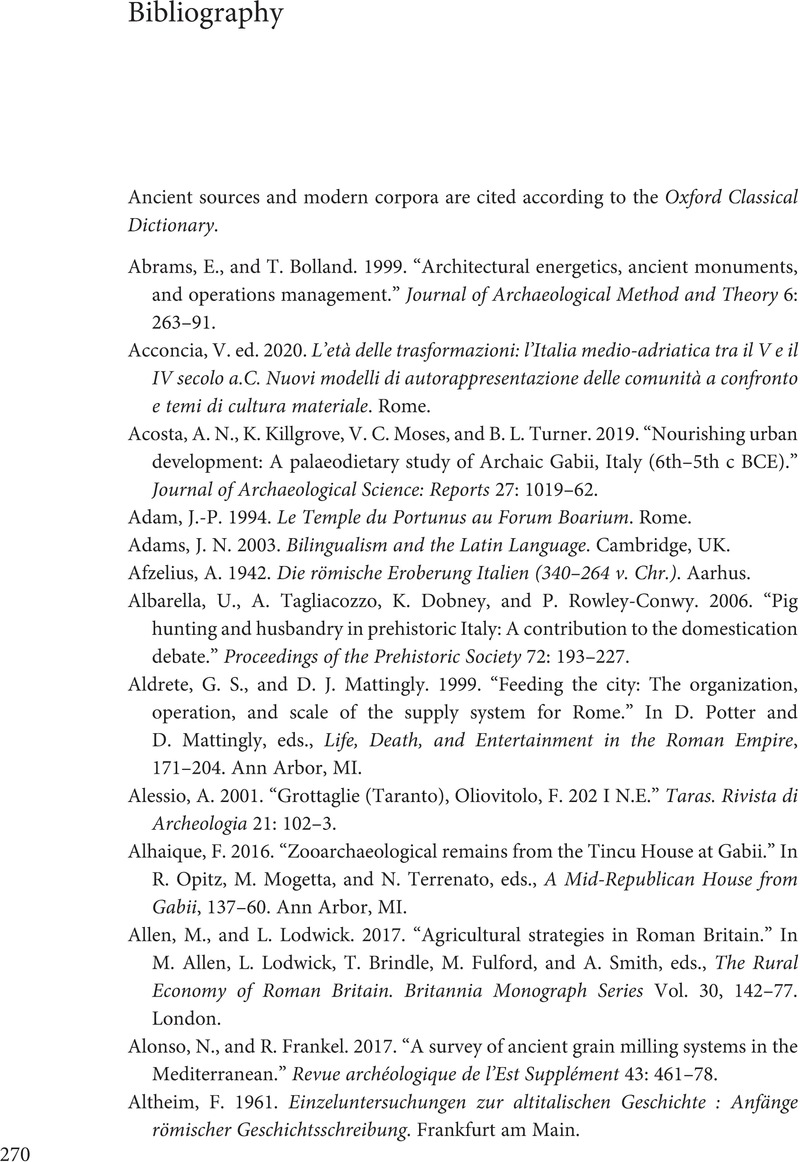Bibliography
Published online by Cambridge University Press: 20 April 2023
Summary

- Type
- Chapter
- Information
- Making the Middle RepublicNew Approaches to Rome and Italy, c.400-200 BCE, pp. 270 - 330Publisher: Cambridge University PressPrint publication year: 2023

